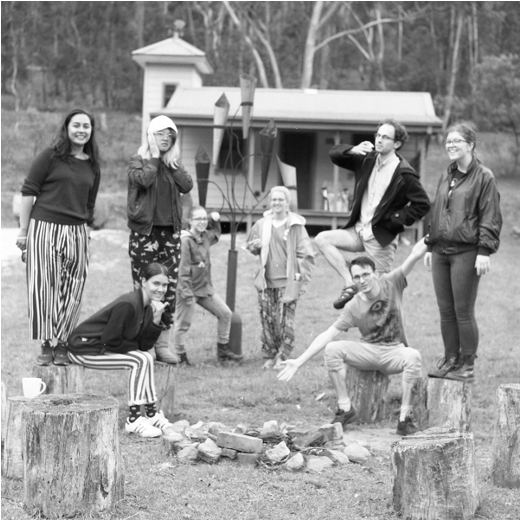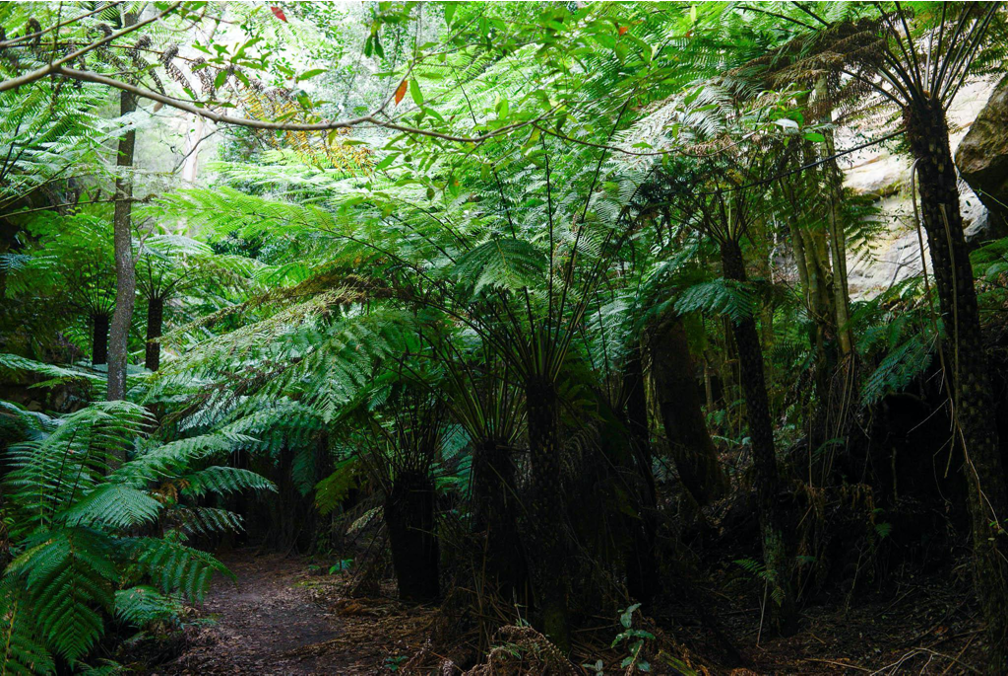
In 2015 and again in 2017 we brought a small class of undergraduate animation students from the University of Technology Sydney on camping expeditions into the Sydney hinterland to seek out evidence and inspiration for animation in abandoned settlements of the past, the ghost towns of Hill End and Newnes that remain after failed endeavors within reach of Sydney. Taking inspiration from the concept of the outdoor classroom and related pedagogy (Stewart, 2008), we hoped to inspire students through authentic artefact and connection to physical worlds.

Our domestic and international undergraduate animation students tend to come from cities and suburbs, with little practical experience of field research and inquiry. More generally, students’ investigative skills are limited to Internet search engines, with online resources being their sole conduit to information and their only method of inquiry. Each expedition – entitled ‘Story Prospecting’ – was designed to challenge these practices by taking students off-campus to abandoned ‘ghost towns’ for several days to seek inspiration for project work from artifacts, landscapes, and local histories. The bush continually regenerates and hides physical evidence, particularly after catastrophic events. Histories are buried deep under layers of new growth in the landscape and in the archives.
Tasks on site were designed to explore and fossick for source material based upon people, events, and places from the past. Students camped out while journaling, learning camera craft, conducting audio field recordings, telling stories, and flying drones. Each day was designed as an immersive experience, with student groups asked to develop creative responses away from the computer screen and without the formal structure of university assessment.

Each expedition began at the State Library with research librarians. In these sessions, documents, newspapers and artefacts were presented and examined by the students to establish a broad historical backdrop. The librarians also introduced students to best practice research methods using archival resources.
In the historic gold mining town of Hill End, the students participated in a fictional storytelling exercise focused on the traditional ‘yarn’. In the spirit of prospecting, students were challenged to wander around the little ghost town and look for clues, ideas, images and information to inform a story that they would later tell the rest of the group. Everyone had to choose a site specific to their story.
In the second expedition, to the abandoned shale oil mining town of Newnes, we asked for the articulation of a story using a format of 12 still images: a ‘dodecatombe’, which is a concept coined from a roll of photographic film. This concept requires concise visual storytelling through experimentation.
On the final night of each expedition, the students screened their images in an impromptu theatre consisting of a white bed sheet hung near the campfire. The brief was to present twelve images or videos to tell a story. The story could be about anything at all and could include animation, stills, video, and sound effects.
Both expeditions were peppered with workshop activities over the three days to encourage exploration and engagement with the site and the resources made available. The students participated in ‘en plein air’ drawing workshops, drone flying, night photography, timelapse photography, audio field recording, camera craft and documentary film production, ukulele playing, campfire lighting and cooking.
We had taken inspiration from a paper documenting a cultural mapping project, ‘The Piggery’ (Eräranta et al., 2016), as a design practice and methodology for answering a problem across time and cultural complexity. By using a historical and cultural mapping exercise, we were asking the students to engage with and ‘make real and/or get inspired to then be able to make work’.
The pedagogy of animation is multifaceted, borrowing from disciplines including acting, fine art, directing, and storytelling. Strategies to find ‘a truth’ very often give rise to exercises designed to reveal authenticity, which effectively reframe the creative approach.

In the fine arts, the concept of the “found object” is an important part of the development process which interrupts and challenges contrivance in design. In life drawing the practice of observation is championed over what we think we see and encourages the artist/practitioner to challenge preconceived ideas and draw from what they see in that moment. Quite often this leads to the breaking down and subversion of graphical and pictorial tropes and a more authentic representation of an experience or landscape. In the dramatic arts, Stilson describes Stanislavski’s method acting approach as being an “art of experiencing” rather than “an art of representation”. This becomes a conceptual framework for performing artist to find voice and originality (Stilson, 2005).

In much the same manner we hoped to create our own framework for finding authenticity from a time and place: from a historical moment or a found artefact. Reflecting upon the value of both of these expeditions we noticed that the quality of narrative work the students did following the trip was stronger compared to past years. We saw evidence of truth and engagement from the authentic experience that we don’t normally see in the classroom. The conversation around work, although simple in scope, seemed to resonate more clearly from a time and place: drawing upon physical evidence as constructive boundaries.
Extended outdoor classroom experiences reframe and challenge animation pedagogy (Jelmberg, 2010). It subverts the convenience of the animation studio and places students in unfamiliar environments that expand their potential sphere of engagement. The value of field trips mandates a slow, non-digital primary experience that would be difficult to recreate on a university campus. There is significant pedagogical value of field research and field practice for undergraduate students within the discipline of Animation, including examining the limitations and outcomes of these experiences, as well as the significance for students going forward in their degree and beyond.
References
Eräranta, K., Leino, T., Seppälä, T., Viña, S., & Timonen, E. I. (2016). “Mapping the Pig Tale Journey: A Multidisciplinary Design Framework for Cultural Mapping in an Old Abattoir”, City, Culture and Society, 7(1), 25-33.
Jelmberg, J. R. (2010). The outdoor classroom: Integrating Learning and Adventure. Cresskill, NJ: Hampton Press.
Stewart, A. (2008). “Whose place, whose history? Outdoor environmental education pedagogy as ‘reading’ the landscape”, Journal of Adventure Education & Outdoor Learning. https://doi.org/10.1080/14729670801906125
Stilson, K. (2005). “The Stanislavski System”, International Journal of the Humanities.
Matt Gidney came to animation from engineering: having specialised in CAD software development, field acoustics and oil field services (wireline). After a career change, and returning to the arts, he now has over 25 years of experience in animation and visual effects: growing with it from an analogue medium into digital. Matt has worked internationally in leading roles at Lucasfilm, Framestore, The Moving Picture Company, Animal Logic and Double Negative. He is credited on numerous feature films, television series and commercials. A graduate in engineering, film school and fine arts, he now teaches and runs the animation program at University of Technology Sydney. His research interests cover visual perception, creative technologies and animation pedagogy.
Jack McGrath is a filmmaker, stop-motion animator, director and lecturer with 20 years’ experience producing visual content. Jack has a Master of Fine Arts from the University of Sydney and has lectured in film and animation for a decade. His short films are screened internationally, and he is Director of a production company working in animation and video. Jack is a lecturer in animation in the School of Creative Industries at the University of Newcastle. His research investigates the liminal zone between traditional stop-motion animation and emerging digital technologies. Jack is interested in hybrid animation workflows and merging new technology with traditional animation.
